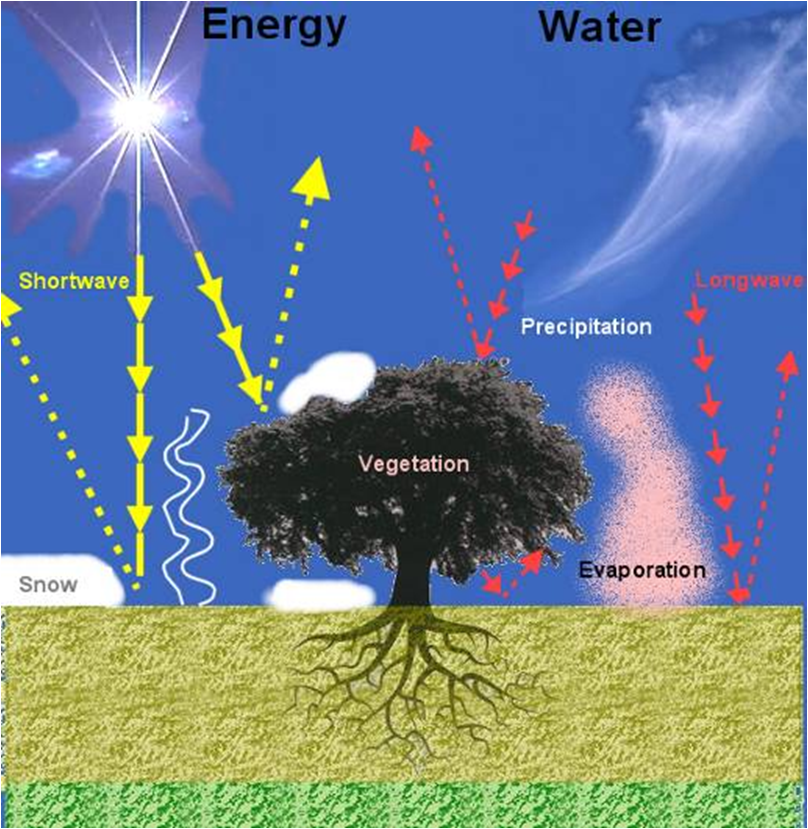The University of TOrino land surface Process Interaction model in Atmosphere (UTOPIA)
The University of TOrino land surface Process Interaction model in Atmosphere (UTOPIA) is the upgraded version of the LSPM (Land Surface Process Model: Cassardo et al. (1995); Cassardo et al. (2006)), a diagnostic one-dimensional model studying the interactions at the interface between the atmospheric surface layer, the vegetation and the soil (Figure 3.2). Both UTOPIA and its ancestor LSPM have been tested several times using routinely measured data, or field campaigns data, or coupled with an atmospheric circulation model. The UTOPIA is able to represent the physical processes at the interface between atmospheric surface, vegetation and soil layers. The UTOPIA can be categorized as a big leaf model, meaning that a single vegetation element contributing to the various processes is considered, without considering its real extension. As SVAT models, it can, known the system initial conditions , to describe the energy, momentum, and humidity exchanges between the atmosphere and the soil, in the different ways they may occur. The UTOPIA is a soil multilayer model, and discretizes the soil into a certain number of layers defined by the user. UTOPIA is a one-dimensional model, meaning that it works on a single point (station) in which the only direction allowed is the vertical one (from the surface layer to the deep soil). Fluxes are evaluated by building a resistances scheme. In UTOPIA, the vegetation and the soil are represented according to their physical parameters: a big leaf approximation is used. Momentum, heat and water vapor exchanges are the main physical processes considered in UTOPIA. In addition to the above mentioned physical processes, the model solves the hydrological processes, e.g. those involving water, water vapor and ice. The most recent manual |
 |